-1.png)
Oxygen is essential for maintaining human life. Each time you inhale, your lungs begin a chemical process called cellular respiration where oxygen is removed from the air and is used to convert nutrients into energy that our bodies can use. Without oxygen in the atmosphere, our bodies would have no way to process and digest the food we eat.
However, what many people don’t realize is that oxygen is not always beneficial to the body. Earth’s atmosphere is made up of a variety of gases including nitrogen, argon, and carbon dioxide. Only about 21 percent of the atmosphere is oxygen, so it’s not just the presence of oxygen that makes human life possible, but the fact that there’s a perfect balance of oxygen to keep us healthy.
When the partial pressure of O2 that you inhale is above 0.45 ATA (atmospheres absolute) you’ll start to experience symptoms of oxygen toxicity. Extended exposure to this level of oxygen can lead to pulmonary oxygen toxicity which is characterized by chest pain, shortness of breath, and a chronic cough. Short-term exposure to even higher partial pressures of oxygen can lead to oxygen toxicity of the brain which causes lightheadedness, nausea, and confusion.
In short, your body is designed to process a certain amount of oxygen at a specific partial pressure. When these needs aren’t met, you may begin to experience adverse side effects. These side-effects can be treated with oxygen therapy. In this post, we’ll take a look at 4 different types of oxygen therapy in use today and how they work.
{{cta('fa8abc2a-1e88-4fa3-82fd-1cb5b9ed43b2','justifycenter')}}
Hyperbaric Oxygen Therapy
The term “hyperbaric” is used to describe a gas at a higher partial pressure than it’s normally found at. Therefore, “hyperbaric oxygen therapy” is the use of higher partial pressure of oxygen in order to treat a variety of conditions. One of the most common conditions treated by hyperbaric oxygen therapy is decompression sickness, commonly experienced by scuba divers and other people who breathe with the help of an oxygen tank.
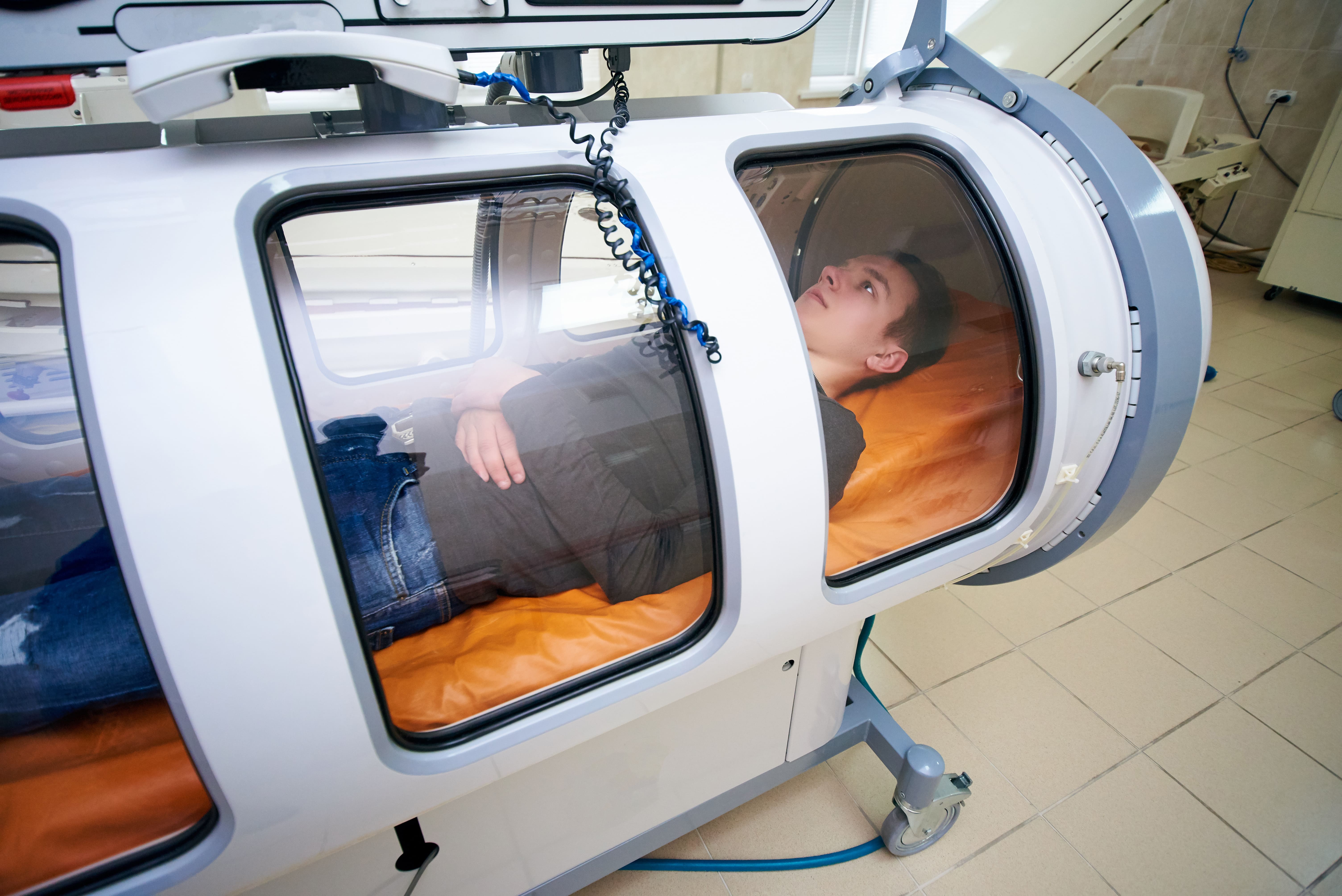
The ultimate goal of hyperbaric oxygen therapy is to get more oxygen in the blood. By inhaling pure oxygen at pressures 1.5 to 3 times higher than normal, it can promote healing in areas of the body that are deprived of oxygen. As such, it can be a useful therapy for treating wounds and infections that are not healing normally. Risks of hyperbaric oxygen therapy include oxygen toxicity, ear trauma, and eye damage.
How Does the Procedure Work?
There are two common types of hyperbaric oxygen therapy (HBOT): monoplace chambers and multiplace chambers. Monoplace chambers resemble MRI machines and they’re able to hold one person. Once the patient enters the chamber, the doors are sealed and it’s slowly pressurized with 100 percent oxygen. The patient is typically required to lie down in order to use a monoplace hyperbaric chamber.
Multiplace chambers perform the same function as monoplace chambers but they are able to treat multiple patients at one time. Once the patients enter the room, they wear a mask that delivers the oxygen and the room is then pressurized. One of the key benefits of this type of hyperbaric oxygen therapy is that the patients have more space and the room is often climate-controlled which could be helpful to people who get claustrophobic easily.
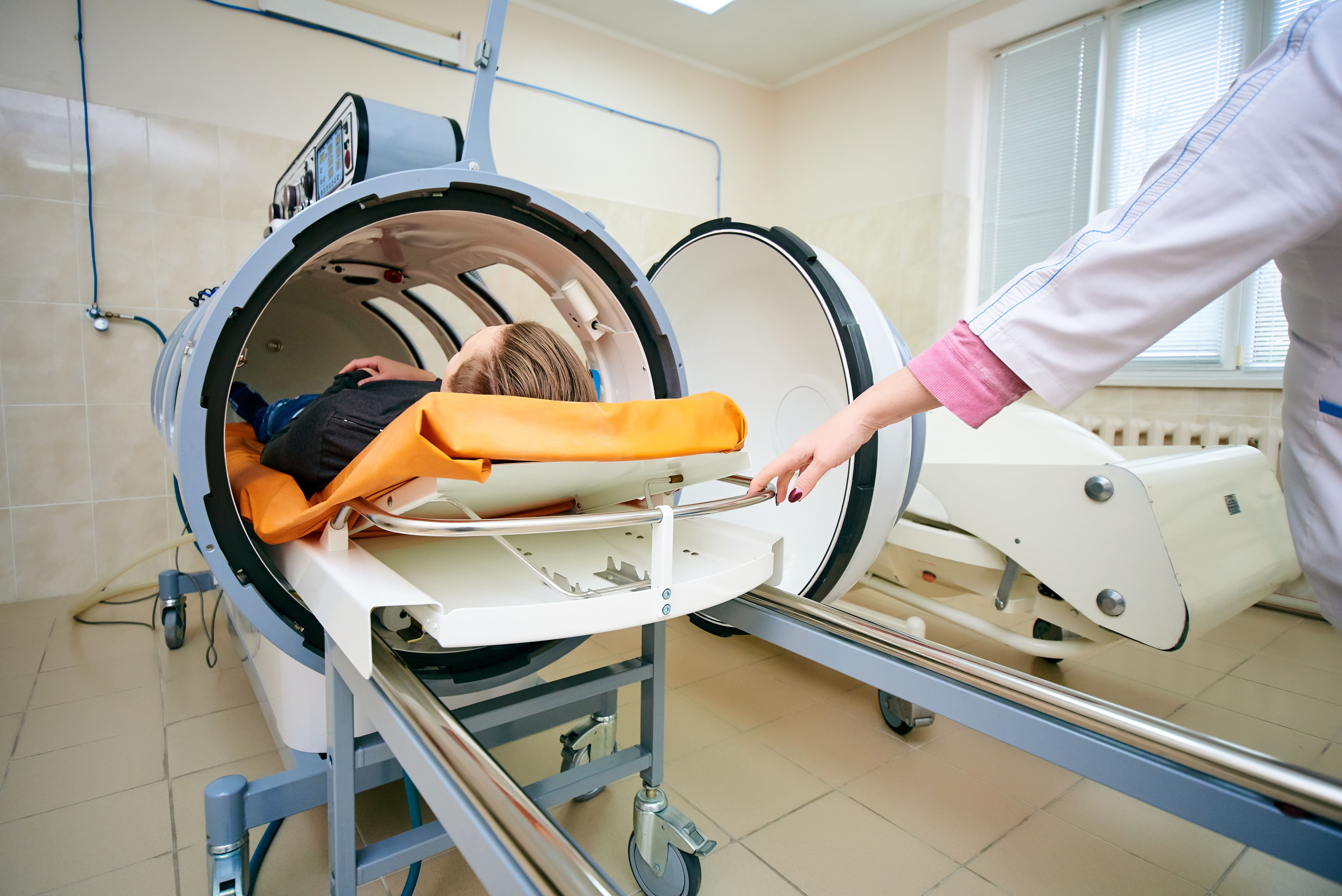
The important thing to remember about this procedure is that it’s carefully controlled by medical professionals. It’s not something that can be done on a whim because your doctor will first need to carefully consider your health and determine whether or not you will benefit from it. If you’re exposed to highly pressurized oxygen for an extended period of time, you could pose a serious risk to your health.
Key Benefits of HBOT
Wound healing
Chronic wounds are wounds that take a long time to heal. Oftentimes, the reason for this slow healing is due to poor circulation or hypoxia (lack of oxygen in the tissue). During HBOT treatment, the supply of oxygen to these tissues will increase which will promote a faster and smoother healing process. Diabetes patients commonly use HBOT because they often suffer from neuropathy (nerve damage) which slows or prevents wound healing.
Skin Cell and Collagen Development
Hyperbaric oxygen therapy has many different anti-aging effects. Collagen is a component of your skin that’s largely responsible for the healing and recovery of wounds, but it also affects the condition of your skin. Skin with a lot of collagen will look more youthful, elastic, and won’t become damaged or scar as easily. Oxygen therapy can help with the production and management of collagen in the body.
Strengthening the Immune System
Innate and adaptive immunity are two of the most important functions of your body. When you ingest any type of foreign bacteria your body is at constant war to protect you from these harmful substances. HBOT is known for being able to disable the toxins of certain bacteria, effectively making them less of a threat to the immune system and the body as a whole. What’s more, oxygen therapy helps white blood cells find and destroy foreign invaders. In some cases, neutrophils even use oxygen radicals to kill invading pathogens.

Preventing Reperfusion Injury
Reperfusion injury is a phenomenon that occurs when oxygen-rich blood returns to a tissue that was previously deprived of oxygen. Reperfusion can result in damage to the tissue, inflammation, and even cause blood vessels to clamp, reducing blood flow to the area. HBOT works to generate scavengers that destroy oxygen radicals which are responsible for tissue damage.
Curing Decompression Sickness
Decompression sickness is a condition commonly contracted by divers who return to the surface too quickly. Due to the rapid change of pressure, bubbles of gas can form in the blood causing symptoms such as dizziness, rashing, fatigue, and chest pain. While decompression sickness is uncommon, it can be serious or even fatal if it isn’t treated swiftly. HBOT is the only effective treatment for decompression sickness because it reduces the size of the gas bubbles, fills the tissues with oxygen, and reduces swelling.

Disadvantages of HBOT
The only disadvantage of HBOT is overexposure. Patients should not be in a hyperbaric chamber for more than 2 hours at a time and they should not be exposed to pressure that is greater than 3 times that of the atmosphere. People with certain lung conditions, a cold or fever, or those who have recently had ear surgery should not consider HBOT.
{{cta('b59df0c1-c4de-47a8-8e1c-0d33d4b414aa','justifycenter')}}
Compressed Oxygen Gas
Compressed oxygen tanks are commonly used in both hospitals and in homes. Despite being thrown in with hyperbaric oxygen therapy, oxygen tanks are used in very different situations. Whereas HBOT is used to repair tissue damage and cure decompression sickness, oxygen tanks are commonly used to treat lung conditions such as chronic obstructive pulmonary disease (COPD), cystic fibrosis, pneumonia, and more.
-min.png)
Another significant difference between oxygen tanks and HBOT is that oxygen there is no compression aspect. While oxygen is compressed inside the tank, you won’t need to be in a pressurized room or use a special pressurized facemask. Oxygen therapy is commonly administered through the nose via a nasal cannula but face masks can be used as well depending on the situation.
How Do Oxygen Tanks Work?
Oxygen tanks — typically made of aluminum — are filled with medical-grade oxygen. The process that oxygen manufacturers use to fill these tanks maximizes their oxygen concentrator and limits any impurities that could affect the patient’s health. The pressure inside these aluminum tanks reaches about 2,200 pounds per square inch (PSI). To put this into perspective, the average car tire has a PSI of about 32 to 35, so oxygen tanks are considerably more than this. As you can imagine, this makes them pretty dangerous to keep around unless you avoid dropping them or bumping into them.
.jpg)
Compressed oxygen comes in two forms: home oxygen tanks and portable oxygen cylinders. Since oxygen can only be compressed so much, the size of an oxygen tank directly correlates to the amount of oxygen it can hold. Home oxygen tanks are large and bulky but they can hold quite a bit of oxygen. Portable oxygen cylinders like the “E” cylinder, however, weigh around 8 pounds and they can carry up to 6 hours worth of oxygen.
Key Benefits of Compressed Oxygen
Reduced COPD Symptoms
COPD is characterized by symptoms such as breathlessness, chronic fatigue, chest pain, coughing, and wheezing. All of which are very difficult to live with, especially in later stages of the disease. Using compressed oxygen for the amount of time prescribed by your doctor will ensure that your oxygen levels remain stable and symptoms are kept at a minimum.

Reduced Hospital Admissions
High hospitalization rates are a major problem for COPD patients. No matter where you are or what you’re doing, there’s always a chance that you could experience a COPD exacerbation that could put you in the hospital for days or even weeks. Not only do hospital admissions cost a fortune, but they’ll take you away from what you’re doing. Studies show that long-term oxygen therapy reduces the risk of hospitalization.
Disadvantages of Compressed Oxygen
The most notable disadvantage of compressed oxygen is how bulky, heavy, and dangerous it is. Even the smallest and lightest ones on the market are typically too heavy to carry by hand. Most people prefer to either put them in a backpack or use a rolling cart to transport them. What’s more, they aren’t approved by the Federal Aviation Administration (FAA) so you won’t be able to take them on a flight with you.
Liquid Oxygen Tanks
Liquid oxygen is used for the same purpose as compressed oxygen: to support healthy oxygen levels in COPD patients. However, since oxygen takes up less space in its liquid form, liquid oxygen is a better choice for people who want to stay out for longer without having to refill their oxygen tank.
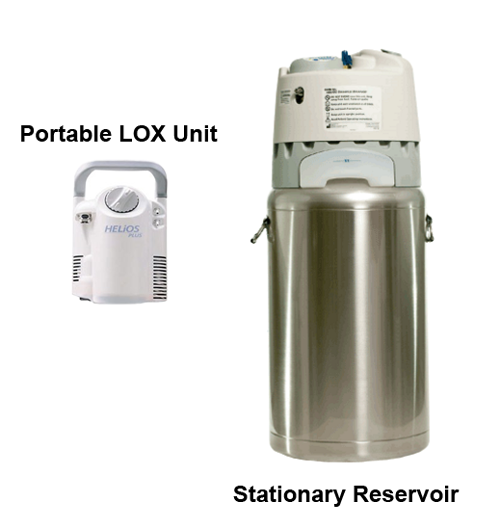
In order for oxygen to be stored in a liquid state, it needs to be cooled to around -297 degrees Fahrenheit. So, in general, liquid oxygen tanks are more advanced and require more training to use than a compressed oxygen tank. As such, liquid oxygen is typically not prescribed for short-term use.
Key Benefits of Liquid Oxygen
Carry More Oxygen Than Compressed Tanks
The main reason someone would choose a liquid oxygen tank over compressed oxygen is that it offers significantly more oxygen. If you have high oxygen flow needs, you can rest easy knowing that you can stay out all day without having to refill the tank. You likely won’t need to resort to something like a pulse dose regulator which is designed to conserve oxygen which is a good thing because they can add weight and make the device more complicated to use.

Much Safer to Use
Another reason to go with liquid oxygen over compressed oxygen is that it’s much safer to use. Compressed oxygen is stored at very high pressures making it very dangerous to carry around or keep in your home. Liquid oxygen, on the other hand, is stored at very low temperatures because it doesn’t expand as much when it’s in its liquid form.
Disadvantages of Liquid Oxygen
The most notable downside to liquid oxygen is the cost. Due to the additional technology needed to keep oxygen at such low temperatures, you should expect to pay significantly more. It’s also a lot harder to find someone who can fill a liquid oxygen tank for a reasonable price. Despite the high costs, many people find that liquid oxygen is worth it due to the amount of freedom it offers.
Oxygen Concentrators
Oxygen concentrators are the newest form of oxygen therapy on the market. They’re used for the same purpose as compressed oxygen and liquid oxygen (treating chronic lung disease) but they’re battery operated. What this means is that as long as you have access to a functional battery, you’ll have an infinite supply of oxygen wherever you go.

Rather than holding oxygen like oxygen tanks, oxygen concentrators draw in ambient air and remove non-essential gases like nitrogen, argon, and carbon dioxide. They then put out pure medical-grade oxygen through the nasal cannula. Since there’s more that can go wrong with an oxygen concentrator, it’s important that you purchase one from a reputable brand like Inogen, AirSep, or Caire Inc.
There are three different types of oxygen concentrators on the market: home oxygen concentrators, portable continuous flow concentrators, and portable pulse flow oxygen concentrators. Home oxygen concentrators (stationary oxygen concentrators) need a wall outlet in order to operate whereas portable oxygen concentrators run off a battery.
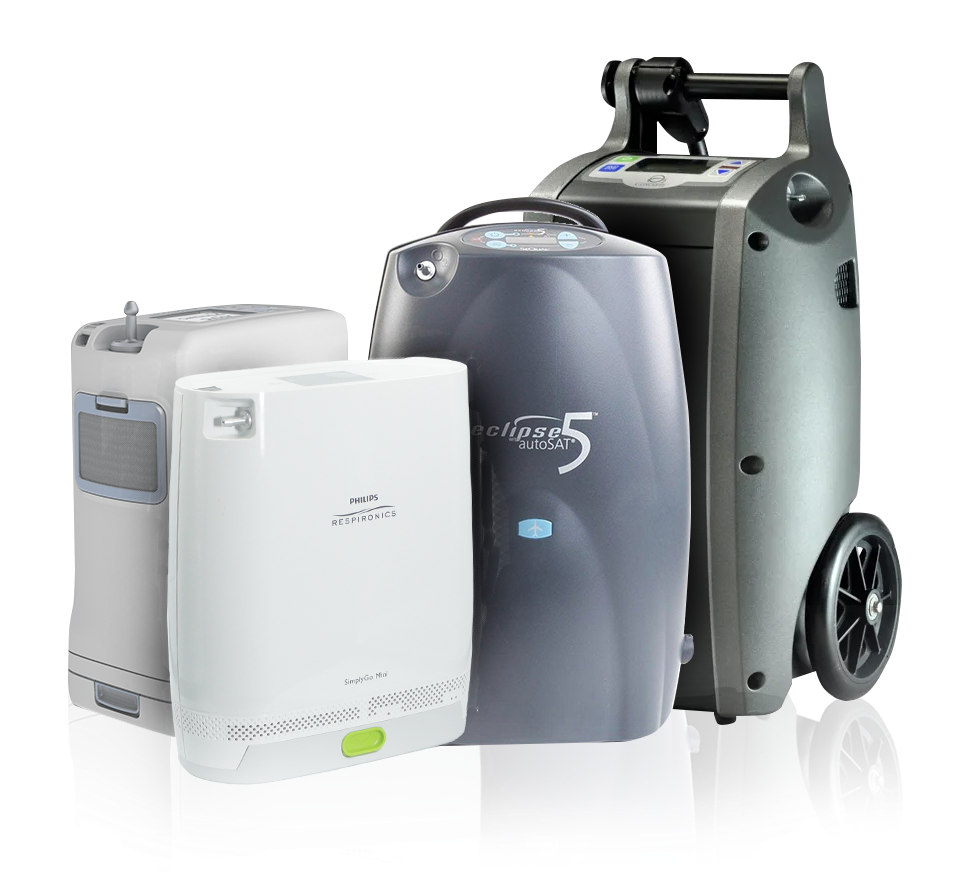
Continuous flow oxygen concentrators are similar to oxygen tanks in that they put out a constant stream of oxygen. They tend to be bulky, usually weighing in at over 10 pounds. Pulse flow oxygen concentrators have additional technology built into them that only puts out oxygen when the user inhales. As such, they are more efficient, lightweight, and small.
Key Benefits of Oxygen Concentrators
No Refills
The greatest part about oxygen concentrators is that they never need to be “refilled” like oxygen tanks do. Simply charge the batteries and you’re good to go. Many POCs even come with car chargers so you can feel free to take a road trip or drive long-distance without ever running out of oxygen.
Very Small and Lightweight
By using compressed oxygen or liquid oxygen, you’re significantly restricting your freedom. Most oxygen tanks need to be wheeled around using a rolling cart but pulse flow portable oxygen concentrators can easily be carried at your side. Most pulse flow units weigh under 6 pounds and some are even small enough to fit in a purse or on your belt.
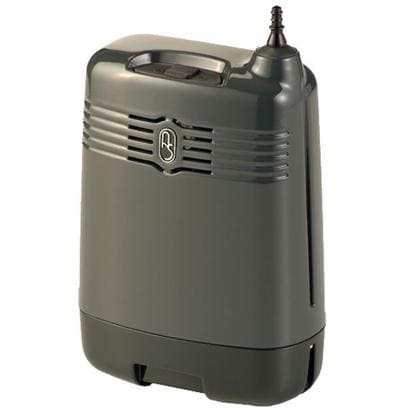
Safe to Use
While liquid oxygen tanks are significantly safer than compressed oxygen, they still can’t compare to pulse flow oxygen. Since oxygen concentrators don’t hold onto any oxygen that they use, there is no chance of them exploding or creating a fire. All of the oxygen that’s administered goes directly to the nasal cannula. Because of this, oxygen concentrators are the only oxygen therapy devices approved by the Federal Aviation Administration (FAA) for in-flight use.

Disadvantages of Oxygen Concentrators
For the vast majority of oxygen patients, oxygen concentrators are the ideal solution. However, there are some potential downsides depending on your situation. If your pulmonologist wants you to use continuous flow oxygen, you’ll have to either use a home oxygen concentrator or a continuous flow portable oxygen concentrator. While you can take these machines just about anywhere, they tend to be bulky and heavy. But most patients would say that they still offer significantly more freedom than oxygen tanks.
Conclusion
There are several different types of oxygen therapy out there so it’s important that you don’t get them confused. Hyperbaric oxygen therapy is a form of short-term oxygen therapy. It can be used to treat conditions like decompression sickness or to prevent reperfusion injury. Hyperbaric oxygen therapy should only be administered by a medical professional under controlled conditions in order to prevent oxygen toxicity.
Oxygen tanks, liquid oxygen tanks, and oxygen concentrators are more commonly used in a long-term setting in order to treat lung conditions like COPD, cystic fibrosis, and pneumonia. These oxygen devices are often prescribed to be used for several hours a day or even 24/7 if the situation demands. Compressed oxygen has been the industry standard for many decades but it’s becoming much less popular due to the freedom and independence liquid oxygen and portable oxygen concentrators have to offer.

